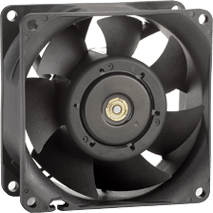Applications in the Food and Beverage Industry
Our quality assurance teams can monitor your current systems and recommend state-of-the-art upgrades and replacements designed specifically for use in your industry. Food and beverage production applications that may benefit from Pelonis airflow technology include:
Farming
Hydronic systems require consistent airflow and temperature control to protect exposed root systems. Without soil to insulate the roots from sudden temperature changes, the plants can go into shock or have reduced output at the end of the growing season. Use Pelonis's heating and ventilation solutions to:
- Control humidity
- Maintain a baseline facility temperature
- Limit exposure to external contaminants
Bread, Cereal and Grain Production
Air control is critical when handling flammable food materials such as flours or starch. Industrial fans remove powder and dust buildup to mitigate the risks posed by these food products. In addition, fans assist in removing excess humidity in storage facilities that can rot or contaminate shipments. Industrial fans used in these applications must be ATEX compliant.
Drying
Bacteria grows faster with access to water and humidity. Cross-ventilation lowers the risk of contamination in produce storage and processing facilities by whisking away moisture from recently washed produce. Cross-ventilation also removes moisture during industrial dehydration processes. Standardizing the dehydration of fruits, vegetables, and meats significantly lowers the risk of bacterial growth and lingering moisture.
Cooking
Industrial kitchens need to meet high airflow standards to protect food components and human workers. Placing industrial fans directly above cooking and food preparation helps to dissipate heat, food odors, and contaminants created during food production.
Cooling
Food manufacturers use industrial fans to cool down recently cooked food products on conveyor belts and to facilitate proper airflow in industrial refrigeration. Cold storage facilities must also ensure proper airflow to avoid stagnant air, reduce moisture that can lead to ice buildup, and to maintain uniform temperatures.









